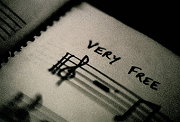
Home > Music Theory > Understanding Key Signatures
|
||||
Understanding Key Signatures
The default key signature, when no symbol is written, is C Major or A Minor, due to both scales containing the same notes. Most people initially learn to read music notation in these scales, so they are familiar with playing songs written in them. The problem is that the symbols used for key signatures are not very intuitive and you must know every note in the scale of the key signature to be able to use it. The key signature is indicates by “#” or “b” symbols written next to the time signature. The number of symbols written can range from one to six. A key signature of six “#” and six “b” symbols is that same, which is why it does not go any further. If six of either symbol is present, the key signature is the F# Major or D# Minor scale. If no symbol is written, the key signature is C Major or A Minor. The confusing part of understanding key signature notation is that they symbols do not make sense without some understanding of music theory. Each “#” added indicates the key signature changes to the fifth of the previous key signature. For example, the fifth of the C Major scale is “G,” so a key signature of “#” is the G Major scale.
Once you know what key signature, you still need to know what notes are in that key signature to understand it. The purpose of the key signature is to modify the notes that are written as natural notes in music notation. The notation vastly simplifies writing songs in keys other than C Major or A Minor, that contains notes that normally would be accidentals in those two scales. The key signature does not change the letter of each line or space. For example, the middle line between the treble clef and bass clef is a “C” line. However, if the key signature has “C#” as a note instead of “C,” the line becomes a “C#” note. For example, normally the treble clef contains the notes E, F, G, A, B, C, D, E, F going up. The B Major scale contains the notes B, C#, D#, E, F#, G# and A#. That means the treble clef in the B Major key signature reads E, F#, G#, A#, B, C#, D#, E, F# instead. Understanding key signature requires a decent knowledge of music theory. You need to understand what notes are in the key signature scale before you can play it. The pattern of change between key signatures is fairly complex, so there is no easy way around it. The circle of fifths, a common diagram used in many musician instruction books, can be very helpful for understanding key signature. These diagrams arrange the notes in a circle, progressing by fifths going to the right and fourths going to the left. As a result, it follows the same progression that key signature notation does. In many cases, these diagrams also display the actual key signature for each scale.
=> http://pianoplayerworld.com/MusicTheoryCourse.html
| ||||
|
Although every attempt has been made to make information as accurate as possible, we are not responsible for any errors that may appear.
 Understanding key signatures is one of the most difficult aspects of reading
music notation. Without the key signatures, music notation can be read with a fairly limited amount of musical
knowledge.
Understanding key signatures is one of the most difficult aspects of reading
music notation. Without the key signatures, music notation can be read with a fairly limited amount of musical
knowledge.
 The fifth of the G Major scale is “D,” so the “##” key signature is D Major. The
same pattern is used for minor The “b” symbol indicates the key signature changes to the fourth note. The
fourth note for C Major is “F,” so the key signature for “b” is F Major.
The fifth of the G Major scale is “D,” so the “##” key signature is D Major. The
same pattern is used for minor The “b” symbol indicates the key signature changes to the fourth note. The
fourth note for C Major is “F,” so the key signature for “b” is F Major.



